| The
Salisbury Wakefield Street and James Leigh Street 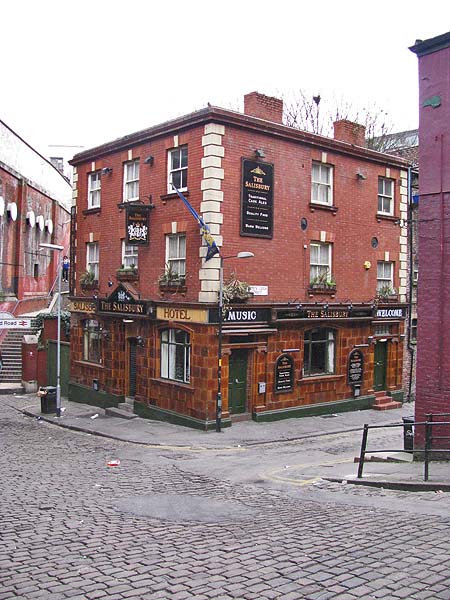 The Salisbury sits at the bottom of a
steep cobbled street beside the railway viaduct that
runs into Oxford Road Station. As the photograph
above shows, it once had a set of steps beside it
allowing commuters to access the station but in 2014
those steps have been shut off reducing the footfall for
the pub.
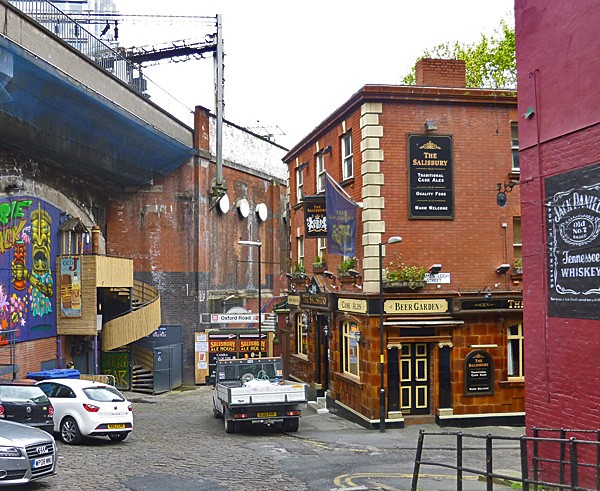 As the plaque on the outside wall says, the pub once sat within one of the poorest areas of Manchester known as Little Ireland because of the nationality of the majority of its residents. 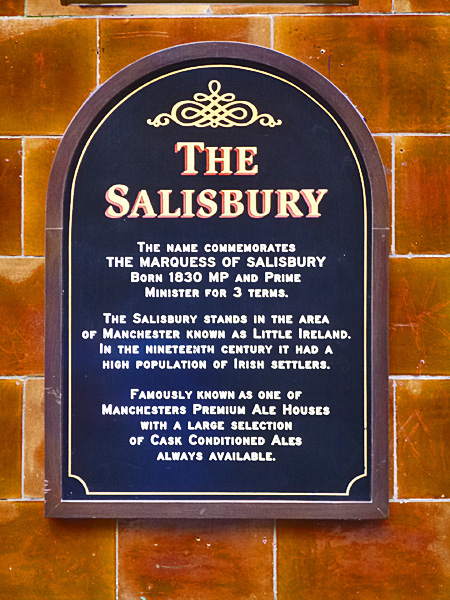 Engels said of Little Ireland that,
of all the dreadful places that working people occupied
in the Manchester of the mid 19th century, "the
most horrible lies .... immediately south-west of
Oxford Road and is known as Little Ireland. In
a rather deep hole, in a curve of the Medlock and
surrounded on all four sides by tall factories and
high enbankments, covered with buildings, stand two
groups of about two hundred cottages, built chiefly
back to back, in which live about 4,000 human
beings, mostly Irish. The cottages are old,
dirty, and of the smallest sort, the streets uneven,
fallen into ruts and in part without drains or
pavement; masses of refuse, offal and sickening
filth lie among standing pools in all directions..."
As you can see on the map from that
period (shown below), the pub sat within a collection of
houses many of which were indeed back-to-back.
However, as you will notice, the pub that occupied this
site wasn't called the Salisbury, it was the
Tulloghgorum Vaults.
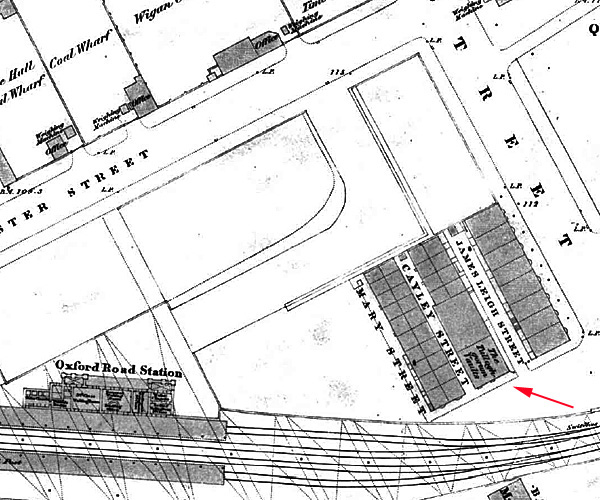 The irony of the name is that in the midst of Little Ireland we seem to have a pub named after a famous Scottish dance tune. The origin of the name appears to be contentious. In his blog Ronnie Gibson proposes a number of explanations. One is that Tulloghgorum might be Gaelic for "Blue Hill" or "Blue-Green Hill". However, he also points to an explanation offered by Rev. William Reid which, whilst interesting, Ronnie suggests, "... its authority is compromised by the romantic and sentimental imagery of the plot and the lack of evidence cited." Rev. Reid says that, "[O]nly a few miles from Grantown is situated Tullochgorum, the scene of the bloody tragedy which inspired the reel of the same name. … [H]ere is to be found the farm-house of Tullochgorum. … Two hundred years ago among the suitors for the hand of the Laird’s daughter, Isabel, was one of the lawless clan Macgregor, but her friends gave the preference to a gentleman of the Robertson clan, who resolved on the destruction of his rival. Accordingly, accompanied by a small party, he came suddenly upon him, but Macgregor was more than a match for his assailants. Having escaped to a barn he made a gallant use of his claymore, striking down successively those who dared to enter, and aided by Isabel, who loaded for him a musket, he succeeded in destroying the whole band, among whom was her brother, who had acted a treacherous part on the occasion. It was in the moment of exultation consequent in such a victory that he composed and danced the famous reel of Tullochgorum." By 1946, when the aerial image below was taken, the area had changed quite a lot. The houses were gone, to be replaced by commercial properties but the pub still sat at the corner of James Leigh Street. 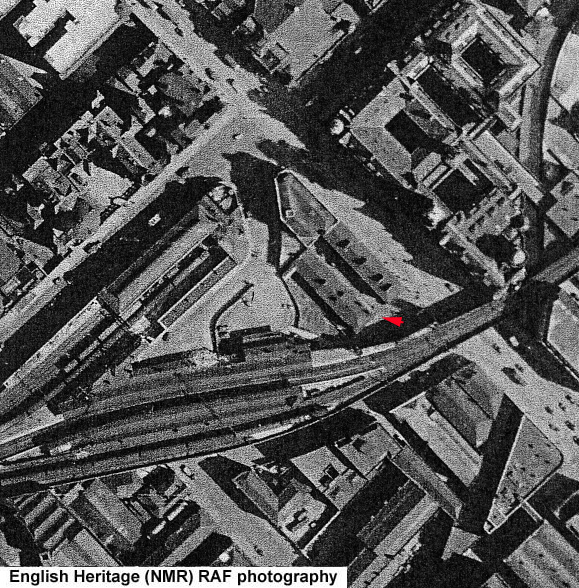 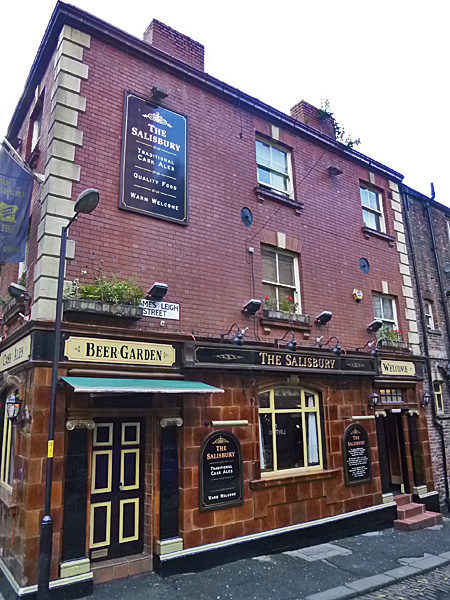  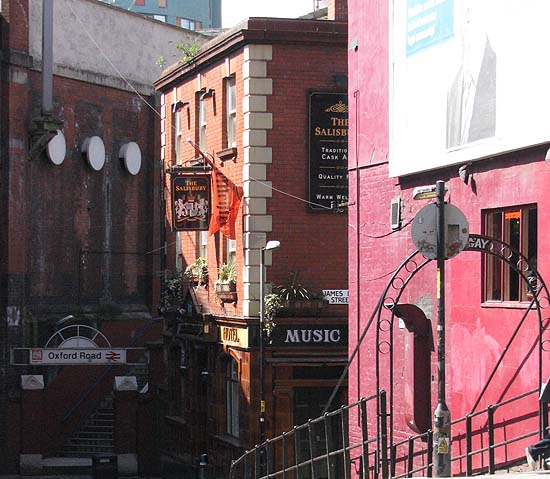 Close Window |
|||